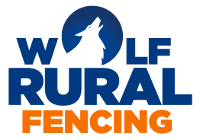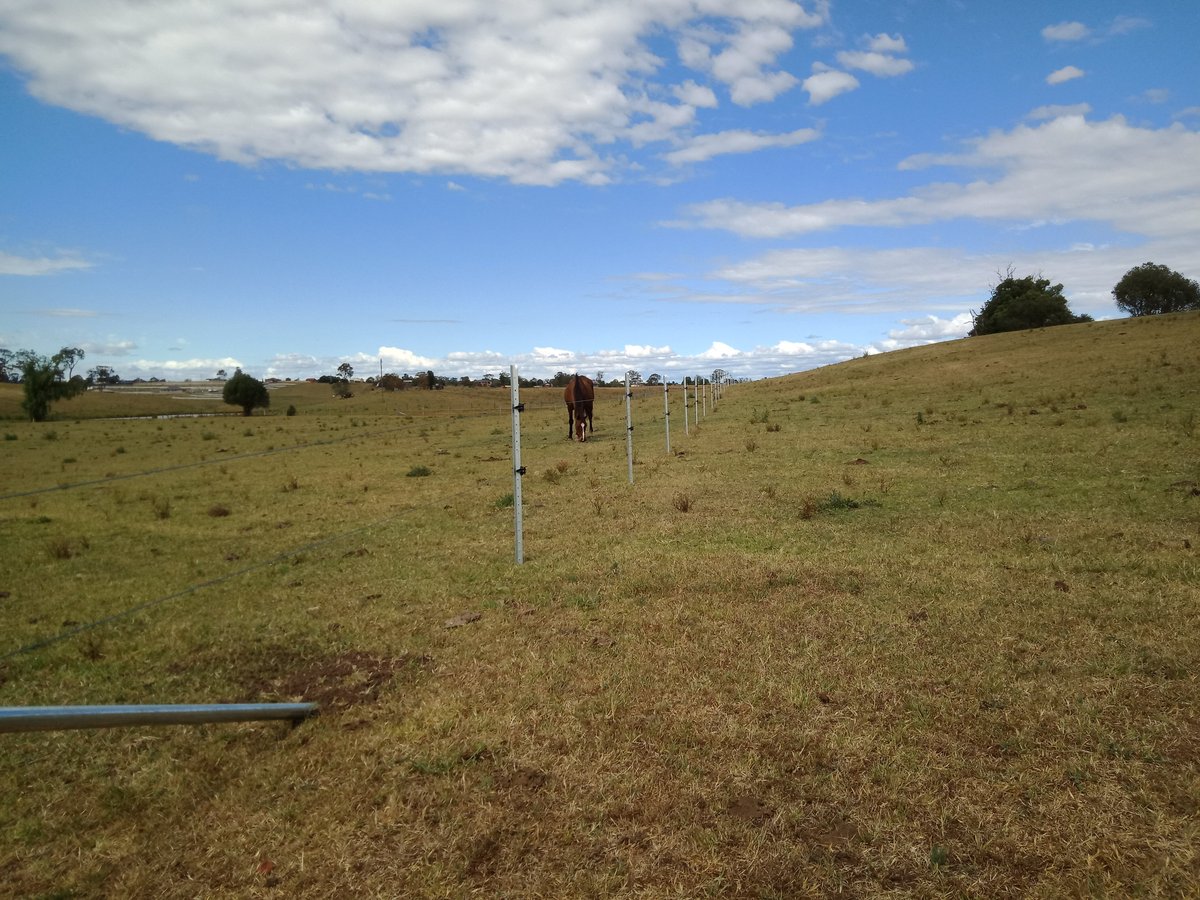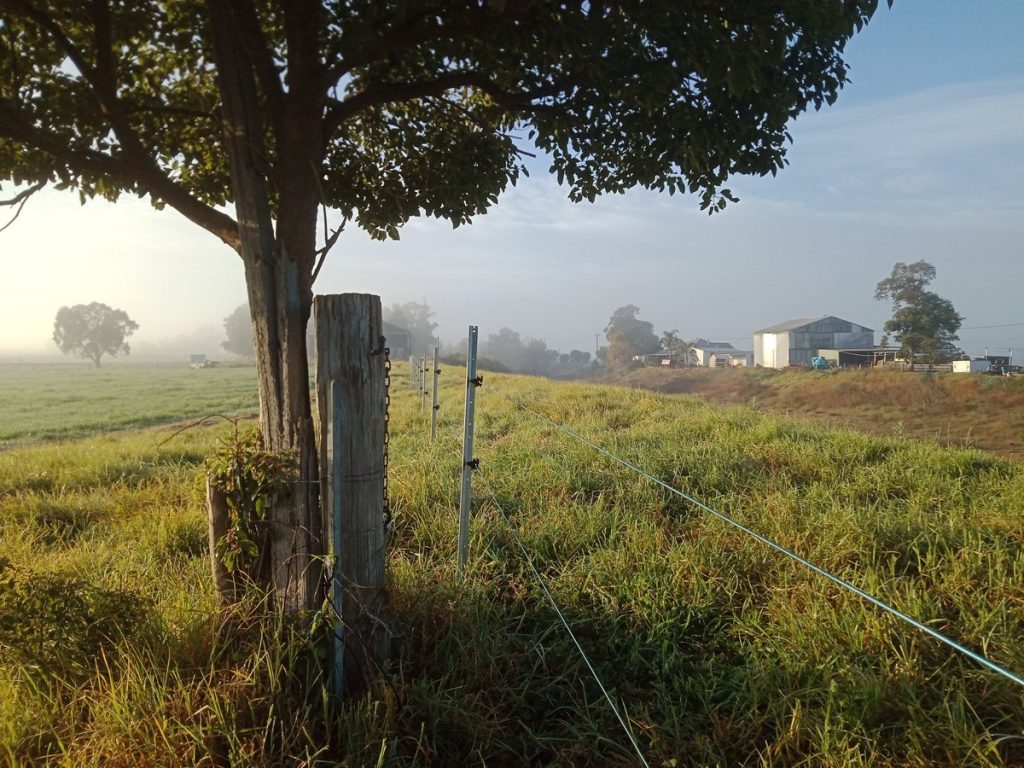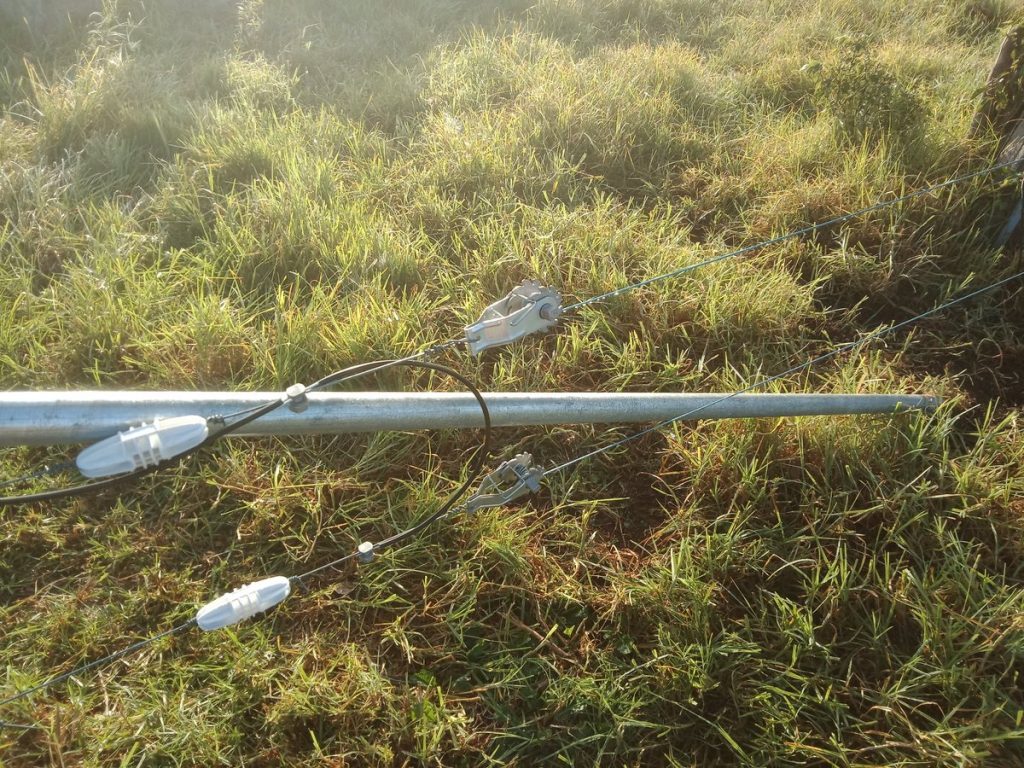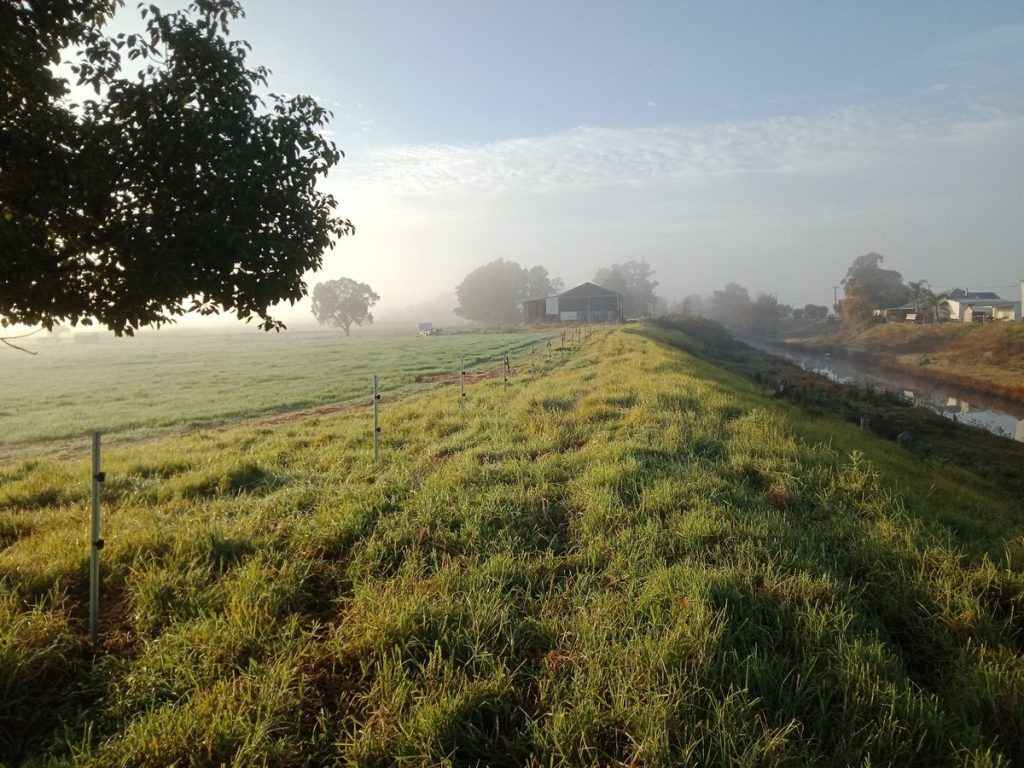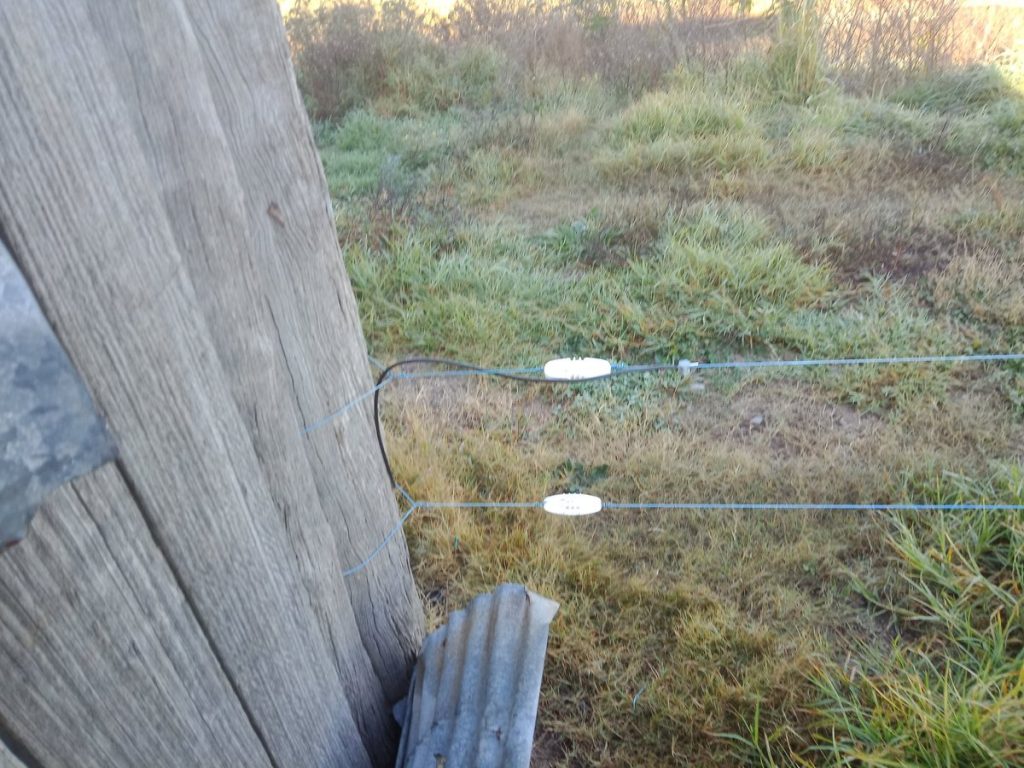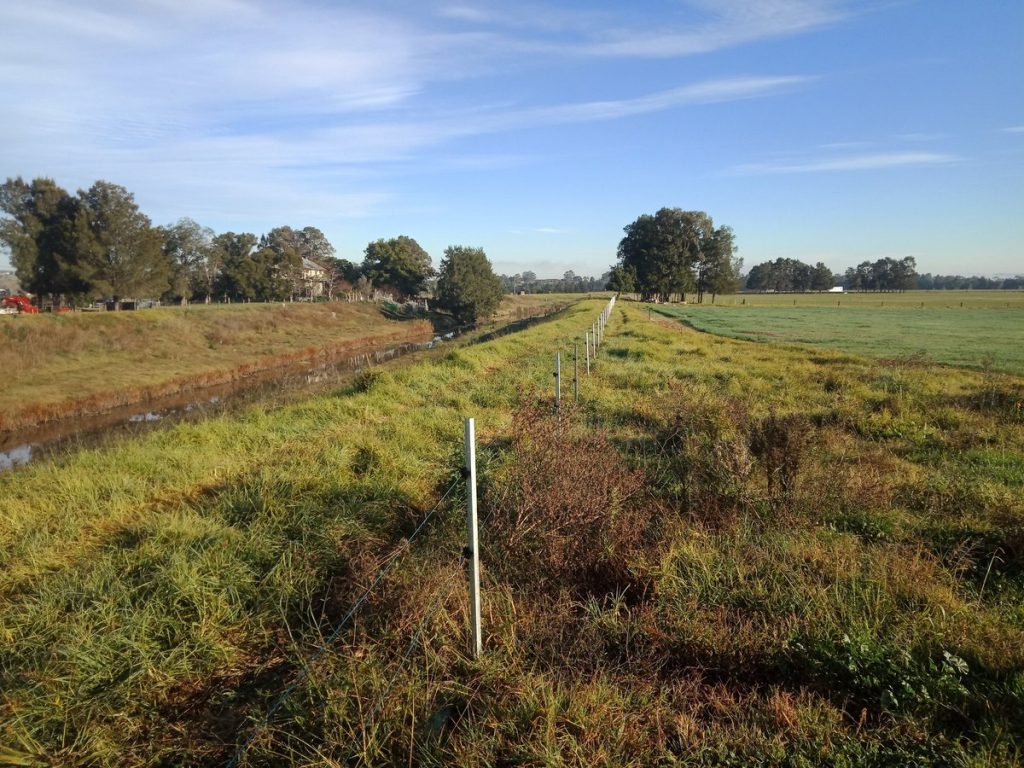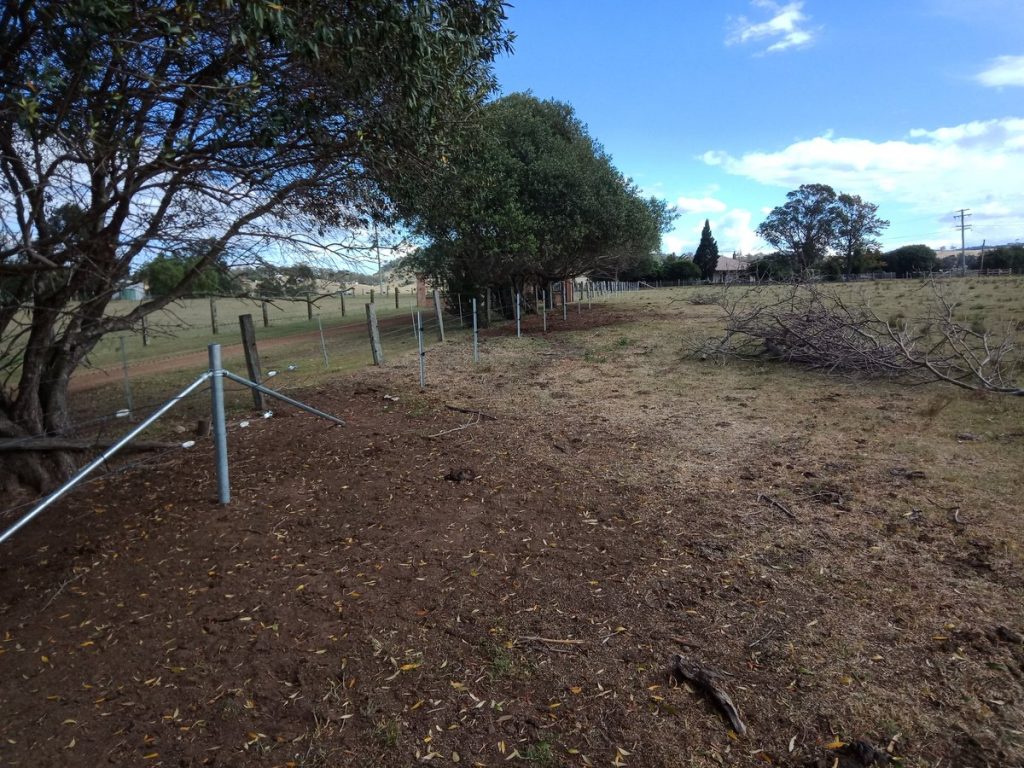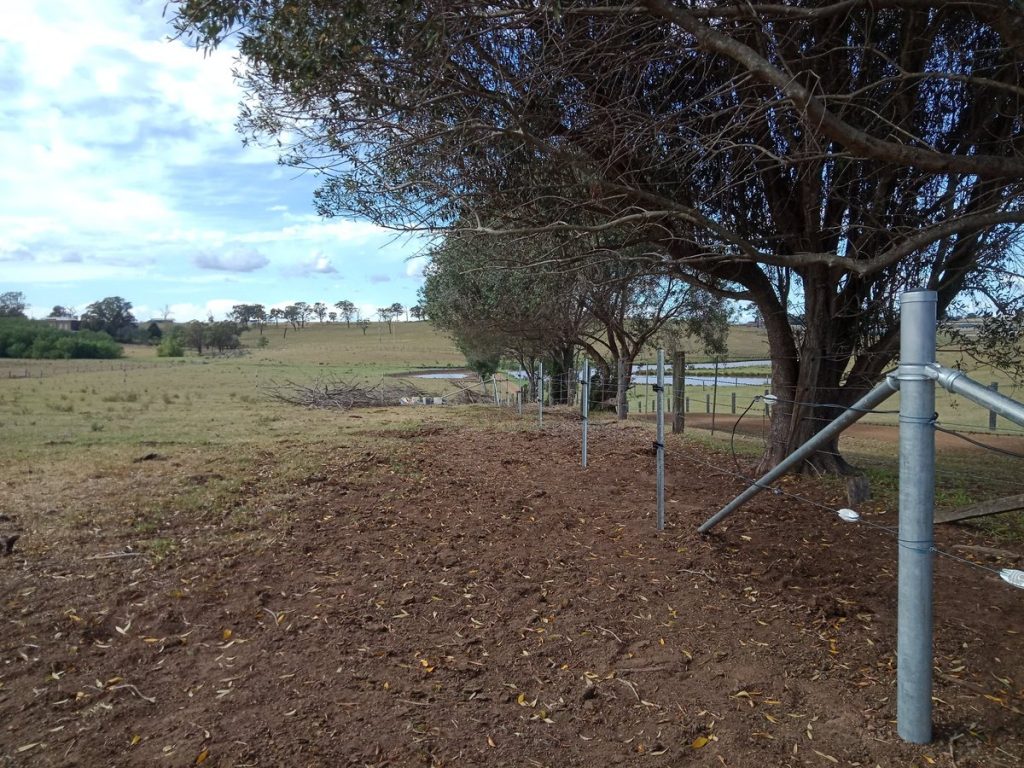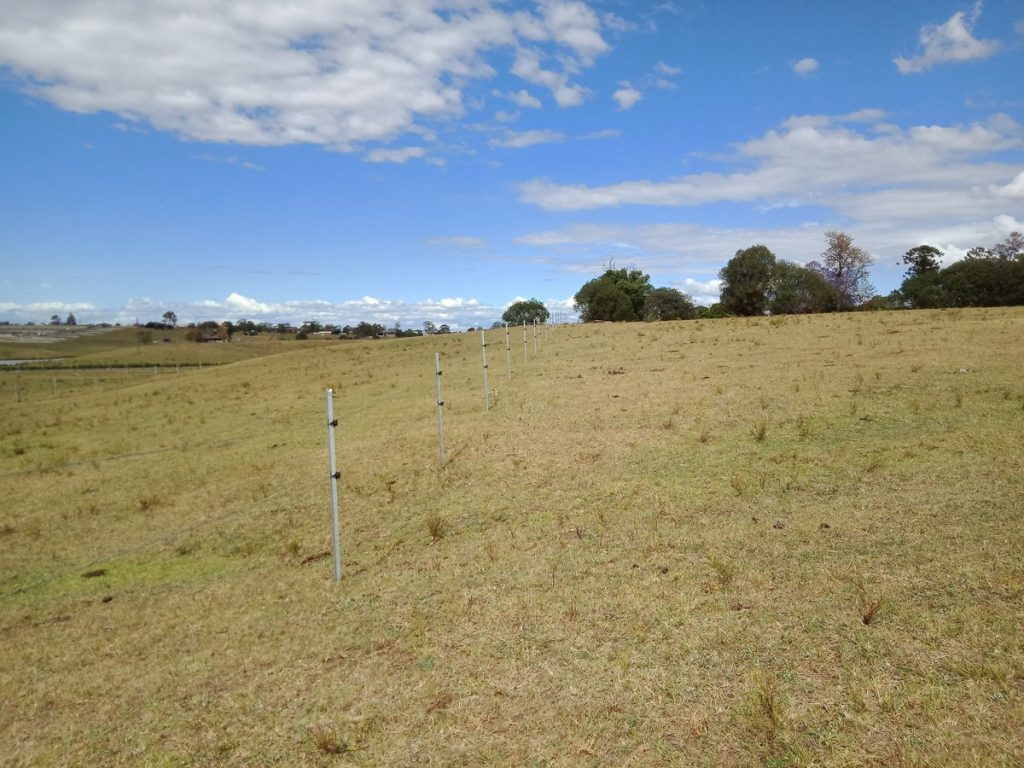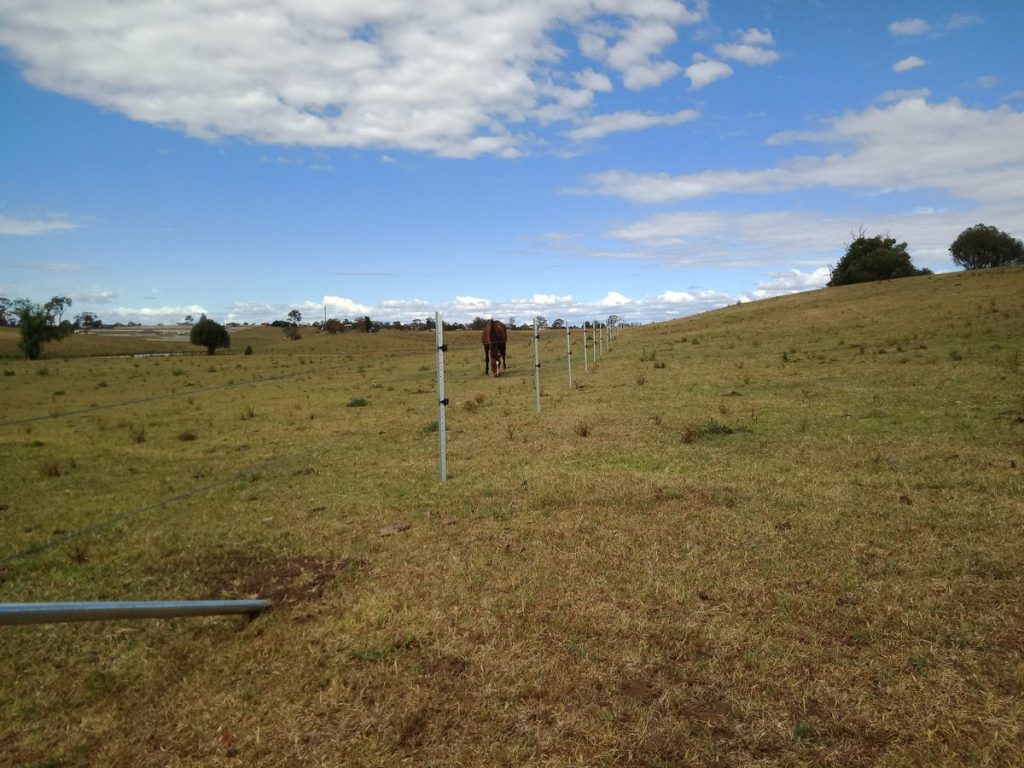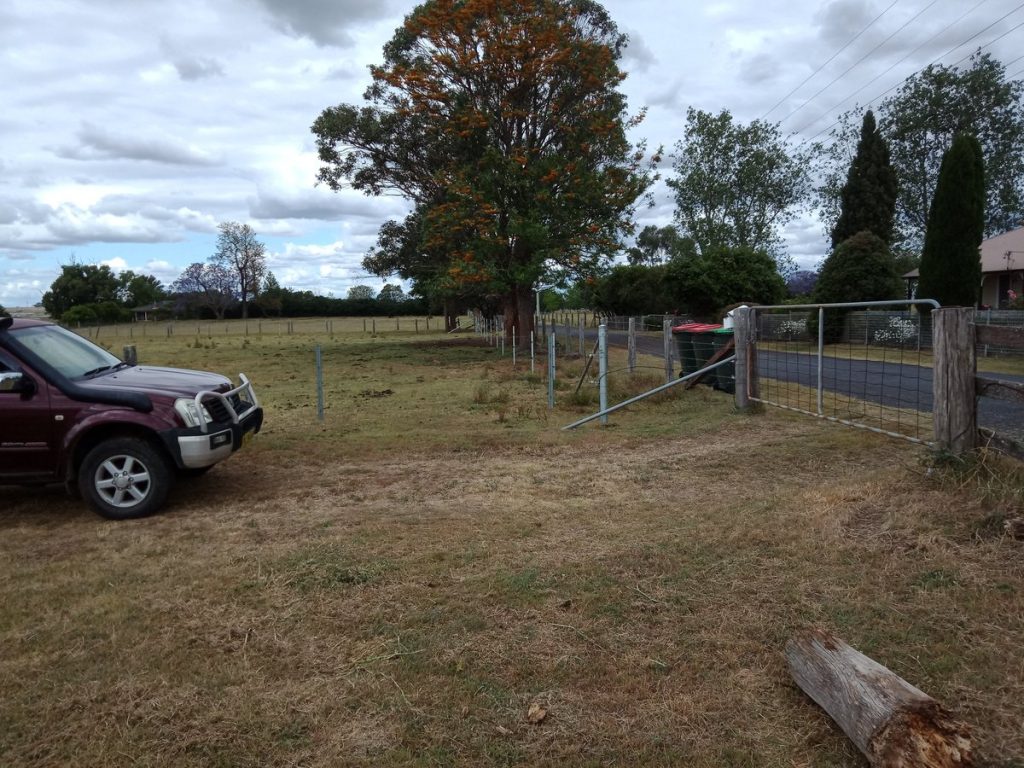Electric fencing is great as:
- an addition to an existing fence, usually run as an offset wire
- an integration into a fence, eg you might want the top line wire of a goat or horse fence to be hot
- a semi permanent fence, eg to not allow live stock access into a lane way along your boundary fence while you’re establishing trees
- a paddock separation fence to improve stock management
Electric fencing is relatively straightforward to install as long as one has a clear plan of how the current will flow and that all connections are of good quality and have at least a 2.5mm gauge. For any jobs that are a bit more complex we always draw up a mud map that clearly shows the current flow and we apply a few simply rules:
- the top wire along the boundary is always the backbone
- each section (eg where the current needs to pass strainers or gates) is connected by using bolts to ensure good conductivity
- different paddocks are separated using switches, allowing you to easily switch off certain areas for trouble shooting on when working in those areas
- we pay a lot of attention to good earth return
- we test every fence and expect to see a minimum of 4000Volts at point of return closest to the enegiser
The kind of jobs we done recently are:
- two wire electric fence to screen of the river flowing through the property
- separating a strip along the boundary to grow screening trees
- separating an existing paddock into several paddocks
- along the top of an horse fence to reduce the likelihood of “post biting”
- to stop goats from climbing fences
- to stop dogs from jumping a fence
Below are a few pictures of recent jobs:
